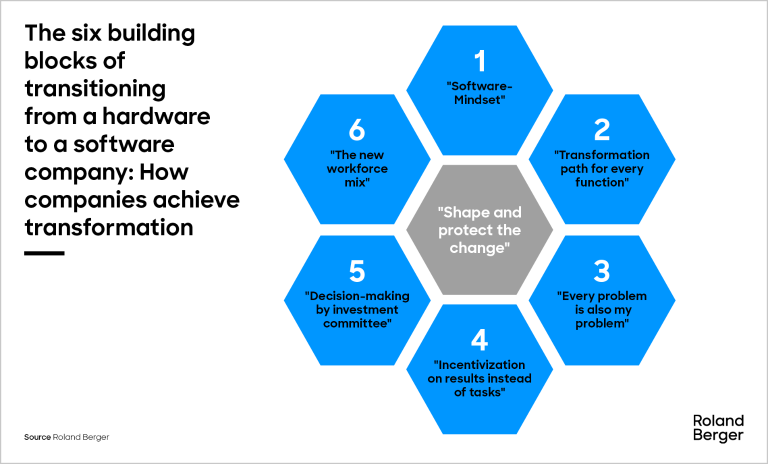Challenges and change as the automotive market returns to growth and braces for technological and geographical transformation


The automotive industry transitioning from hardware to software
By Markus Baum, Caroline Merk and Andreas Poeschl
How governance functions support the transformation – Analysis and solutions
There can barely be another industry under quite so much pressure to transform as the automotive industry. Transitioning to a carbon-neutral future demands a complete overhaul of procurement, development, production and sales processes. Meanwhile, the uncertainty surrounding future market developments and future viable business models could hardly be greater. The concept of "unknown unknowns," coined by former US Secretary of Defense Donald Rumsfeld, succinctly captures this dilemma.

"The question is not whether the software or hardware mindset is superior. OEMs that find a way to combine them both will have a crucial competitive advantage."
The contribution that governance functions can make in such transformation phases has been largely overlooked to date. We firmly believe that especially these functions in the automotive industry are uniquely positioned to help bridge the gap between hardware and software worlds and can give rise to new opportunities for value creation – provided the functions are willing to continuously transform themselves.
Governance functions provide the framework and shape the transformation
What puts the legal, compliance, internal audit, integrity management and risk management functions in this powerful position? Above all, it is their dual mandate to "shape & protect" – a concept that the Mercedes-Benz Group has had ingrained as a guiding principle for several years now. In their "protect" function, the governance functions establish and secure the legal and factual framework for the transformation. They manage risks. At the same time, they actively shape the transformation by exploring new opportunities and possibilities while fulfilling their "shape" role.
Based on nearly a dozen expert interviews with Mercedes-Benz Group AG executives, alongside scientific literature on the subject, and the industry and transformation expertise of our partners, we derived six building blocks of the transformation from hardware to software company to which governance functions can make an important contribution.
Register now to download the full publication on "Governance functions: The automotive industry transitioning from hardware to software." You will also receive regular news and updates directly to your inbox.








